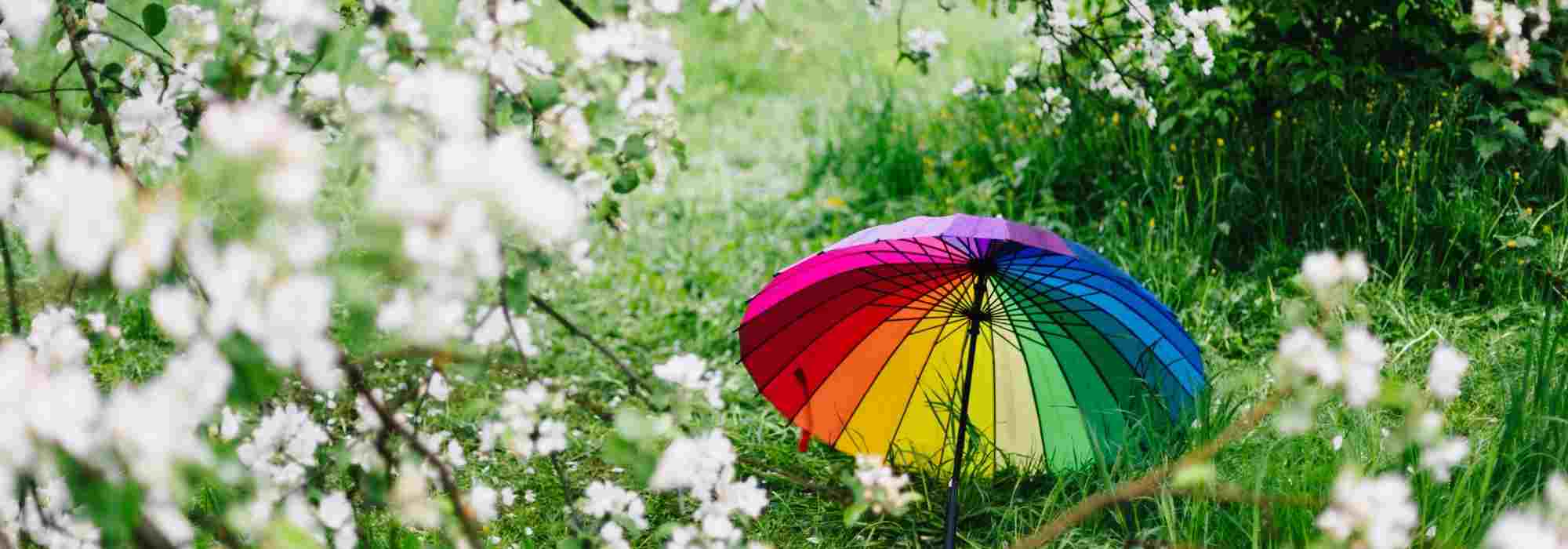
Microclimates in the garden
How to observe and recognise microclimates in the garden?
Contents
Climate is an important parameter when talking about gardening. Variations in temperature, varying humidity levels, wind exposure, periods of frost… all factors that guide our choices regarding the plants we can consider in a garden or on a terrace. But beyond the climates typical of each region (oceanic, montaneous, continental, Mediterranean…), each place has its own characteristics, which can differ from those of its neighbour. We then speak of microclimates, which create conditions the gardener can either take advantage of or be wary of. Learning to observe and recognise the differences that coexist in our gardens is therefore particularly important to optimise our choices and our interventions. I therefore offer you a brief overview of all these conditions, to, in a way… call the shots with the weather in your garden !
What is a microclimate in the garden?
A microclimate is defined as “the set of climatic conditions of a very small, homogeneous area isolated from its surrounding environment.” Some scientists have even shown that the sides of an anthill experience different climates, and that ants adapt their activities to each side. It therefore seems perfectly logical to look at this issue when it comes to analysing the conditions in which a gardener wishes to grow different plants in their garden. It can indeed present very different variations from one spot to another, even within the smallest spaces.
Read also
Climate zones and USDA zones in FranceObserve natural signs
- Garden topography, that is its configuration and relief, already gives valuable clues about the climatic differences at play. Thus, elevated areas (banks, slopes, low walls…) naturally provide greater drainage, resulting in drier soil. This can be an advantage for to grow certain plants that cannot stand having their feet in water. Depending on location of these areas, take care about exposure to wind, which can weaken some vegetation (drying of foliage, increased sensation of cold, broken stems…).
- By contrast, low parts of the garden, although more sheltered from wind, encourage water to stagnate, acting as funnels where rain and runoff gather. Being reached later by sun’s rays, they then take longer to warm up. Some plants tolerate these heavy, wet soils.
- In autumn, note whether fallen leaves on the ground collect in one or more specific spots in the garden. This gives a clue about wind corridors that sweep through it, a useful indication because some plants are especially sensitive to gusts (mechanical effects with risk of breakage, and increased perceived cold).
- In winter, you will probably notice that frost or snow linger longer in some places than others, indicating where to avoid planting plants most sensitive to cold. Moreover, a cold spot is far more problematic if the soil there remains wet in winter, that conjunction of cold and moisture sometimes proving fatal. Note also that some plants fear sudden freeze–thaw periods more than cold itself.
- Our pets are also useful allies. Cats often choose best spots, warmer and sheltered in winter, cooler during hottest hours of summer.
- Finally, do not hesitate to take temperature and rainfall measurements in different places; you may be surprised by the variations possible within a single garden.
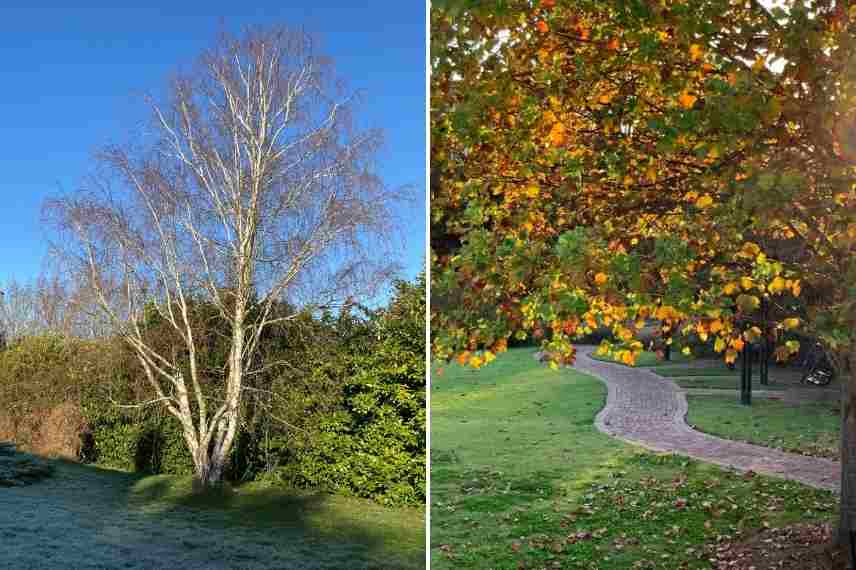
Observe areas remaining frozen for long periods in winter and wind corridors
Influence of walls in a garden
It is rare for a garden to have no walls, whether those of the house or boundary walls. Depending on their orientation, they have a major influence on the climate plants benefit from.
- South-facing walls warm up faster during the day. They therefore store heat during the day and release it at night. Some slightly tender plants do better there. Beware, however, of reflected heat (stronger when the wall is light-coloured), which can damage some plants to the point of scorching. South-facing walls are also sheltered from prevailing winds, which is an advantage.
- Conversely, north-facing walls are almost always in shade, although they may receive a little direct light early and late in the day in the better seasons. They create cool, often colder areas, but have the advantage of not showing large temperature fluctuations. The shade they cast is also less problematic than that created by the shade beneath the direct branches of a tree, for example (I explain why in paragraph 5).
- East-facing walls are the most difficult to manage. They can be exposed to icy winds, cool down significantly at night, yet receive the first rays of sun, which can cause too rapid a thaw and be harmful. This, of course, assumes nothing stands between the sun and the wall itself (tree, hedge, neighbouring house…).
- On west-facing walls, there is all day for their temperature to rise. They are only sunlit in the latter part of the day, and so avoid becoming too hot. However, apart from a few exceptions, they are hit by prevailing winds, sometimes strong, and by the accompanying rain.
- In any case, whether or not there is an overhang can considerably change things. Such projections act like umbrellas, limiting penetration of rainwater at the base of the wall, bearing in mind these spots may also be of poor or stony quality due to backfill.
- Finally, in some places (especially in towns), it is possible that the garden, patio or courtyard is surrounded by walls, sometimes so high that they prevent light from entering. This arrangement has the advantage of sheltering plants from wind and severe frosts, and of allowing cultivation of some plants that would not survive in a more open space.
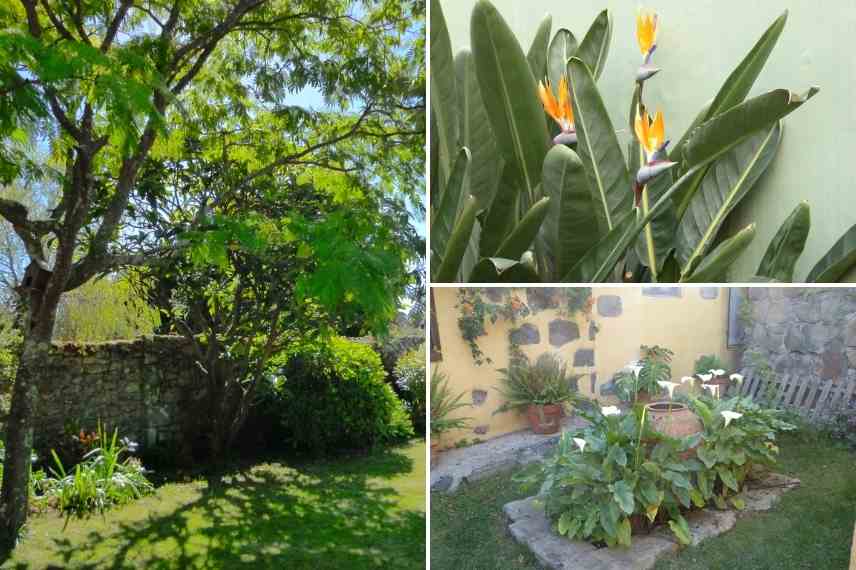
A granite wall gives off a lot of heat to nearby vegetation. On the right, plants more sensitive to cold are placed in sheltered pockets against walls: Strelitzias and Zantedeschias aethiopica (Photos : Gwenaëlle Authier David)
Hedges, a natural defence
Wind is as welcome when it rustles foliage and sets grasses dancing, as it is feared when it threatens our plants. Hedges, whether evergreen, tightly clipped, country-style, flowering or scented, also form effective windbreaks. It is commonly accepted that a 1-metre-high hedge filters wind over 10 metres on the leeward side. Plants thus sheltered are less likely to be blown over or broken. While a wall may seem to play the same role regarding wind, bear in mind it creates eddies that can be more harmful than helpful. Cold is also less biting near a hedge, and the area warms up faster, especially if exposed to sun. However, the closer you plant to the base of the hedge, the drier the soil becomes, because its roots draw more moisture. This can, however, be an advantage for to grow certain undemanding plants.
→ Hedges can be arranged in different strata: large trees are planted at the back, followed by small trees or bushes, all of which filter wind particularly effectively.
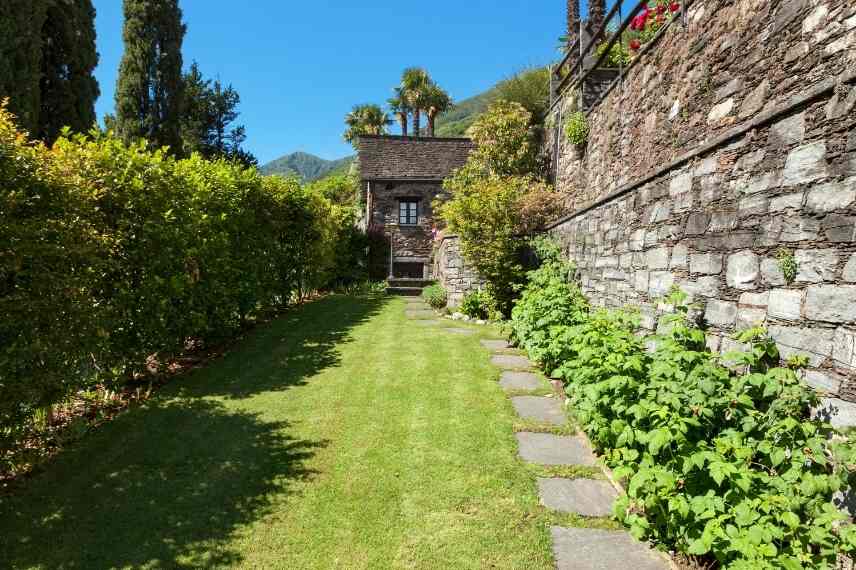
A hedge provides protection against wind, where soil warms up faster than against a wall
Changing conditions beneath trees
Not all trees provide the same benefits or exert the same influence.
- Deciduous trees and bushes provide very good protection from sun’s rays during hottest periods. They create a cool, shaded microclimate that woodland-type plants appreciate. In winter, having shed their leaves (which turn into good-quality humus), they allow light through that benefits the growth of certain plants, such as early bulbs. The root system can, however, be an obstacle to planting. The denser and shallower it is, the more it limits possibilities, and the tree withdraws a large proportion of the water present in the soil. Its branches also act like an umbrella, preventing rainwater from properly reaching plants planted beneath its canopy. Some trees cast more or less shade depending on the density of their branches and leaves. For example, a birch lets more light filter through (dappled light) than a large lime tree (dense shade).
- Evergreen trees and bushes cast dense shade year-round, and rain struggles to reach the soil beneath. They are, however, good barriers against frost, which then has much more difficulty reaching the soil. These conditions can suit certain plants perfectly.
- Finally, conifers, most of which are evergreen, have a reputation for making underplanting difficult. Their needles, when they fall, also acidify the soil. Again, even if choices are more limited, there are plants adapted to these conditions.
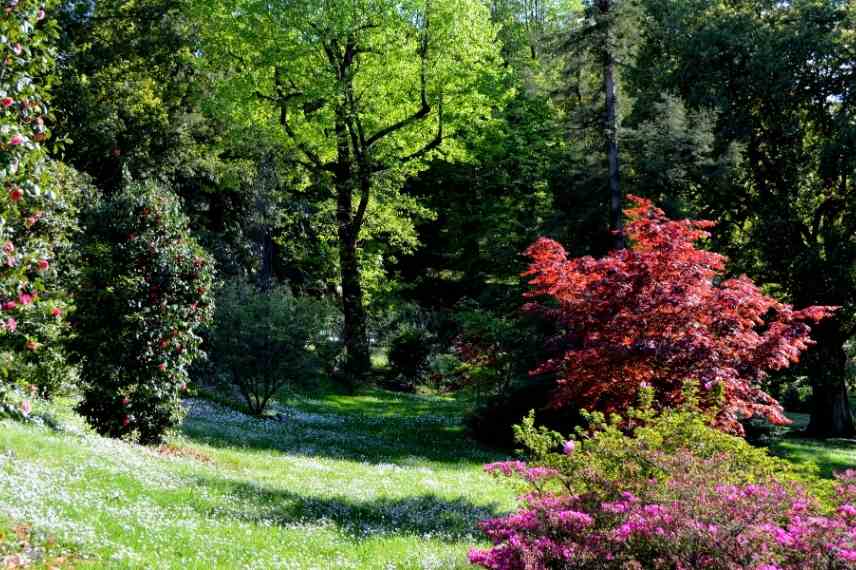
Foliage of deciduous trees influences possible planting beneath the tree, as do evergreen bushes
Mineral: a climate regulator
Just like walls, mineral surfaces can influence ambient temperature.
- Terraces built in masonry, especially if they are leaning against a well-exposed wall, store a few welcome degrees for tender plants. At night this heat is released and creates favourable conditions. The downside is that during the day, the heat reflected back can quickly turn the area into an oven. In winter, these surfaces can conversely remain very cold and transfer that cold to pots standing on them; it is then safer to raise pots slightly, on small blocks for example, to better insulate the roots.
- Scree gardens or rockeries often offer good drainage, particularly at the level of plants’ collar (part between roots and stems), a junction often sensitive to excess moisture. Beyond this filtering role, gravel plays a thermal role, just like rocks and boulders, beneath which plants find cooler zones where they can recover some moisture necessary for their health.

A mineral terrace will capture the sun’s radiation all day. A scree garden is useful for growing plants that require a lot of drainage
Ponds, streams and fountains: sources of refreshment
The sound of water from an aquatic feature, whether a pond, a fountain or a small stream, provides a sense of freshness sought on hot summer days. But benefit is not merely illusory. Water, as it evaporates, helps hydrate ambient air, which surrounding plants benefit from. You can artificially recreate a similar microclimate if you grow potted plants, for example on a balcony: simply fill a saucer to the brim with gravel or clay balls, then top up with water. Place your pot on the saucer. Roots will not sit in the water, but it will evaporate gradually, creating a cooler atmosphere around the plant. Remember to top up the level from time to time.
In case of natural water points in the ground (that is, which did not require installation of a plastic shell and a liner), banks are also moistened by capillary action and runoff. Soil nearby is therefore much cooler and damper than rest of garden, and can thus accommodate a wide range of marginal plants.
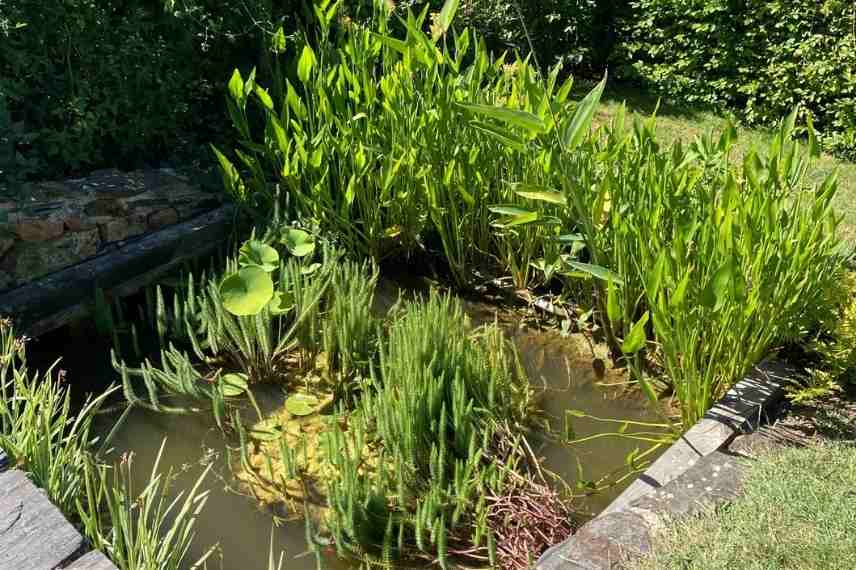
A pond, however small, brings a real feeling of freshness! (photo: Gwenaëlle Authier David)
Mutual support within a flowerbed
Plants planted together in a flowerbed can also help each other.
- Taller plants provide shade for smaller ones, and each can help the other better withstand wind.
- Ground-cover plants protect soil from sun’s rays while limiting evaporation.
- In summer, each plant’s transpiration can benefit its neighbours before dispersing into the atmosphere.
- In winter, packed together (without smothering one another), and even when dry, each can play a protective role against cold and wind. Bear this in mind before cutting back your beds too drastically at the start of winter.
- You can recreate these conditions on a balcony or terrace by grouping your pots into clusters, close to a wall for example, to gain a few extra degrees.
- Subscribe!
- Contents
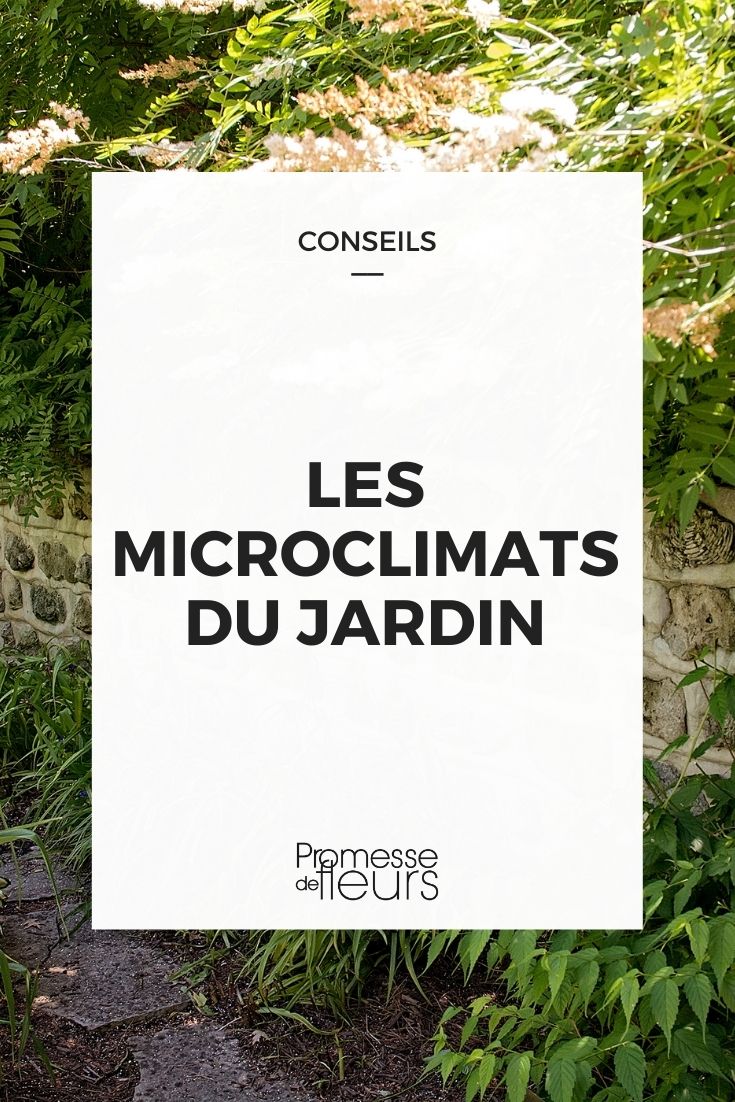































Comments